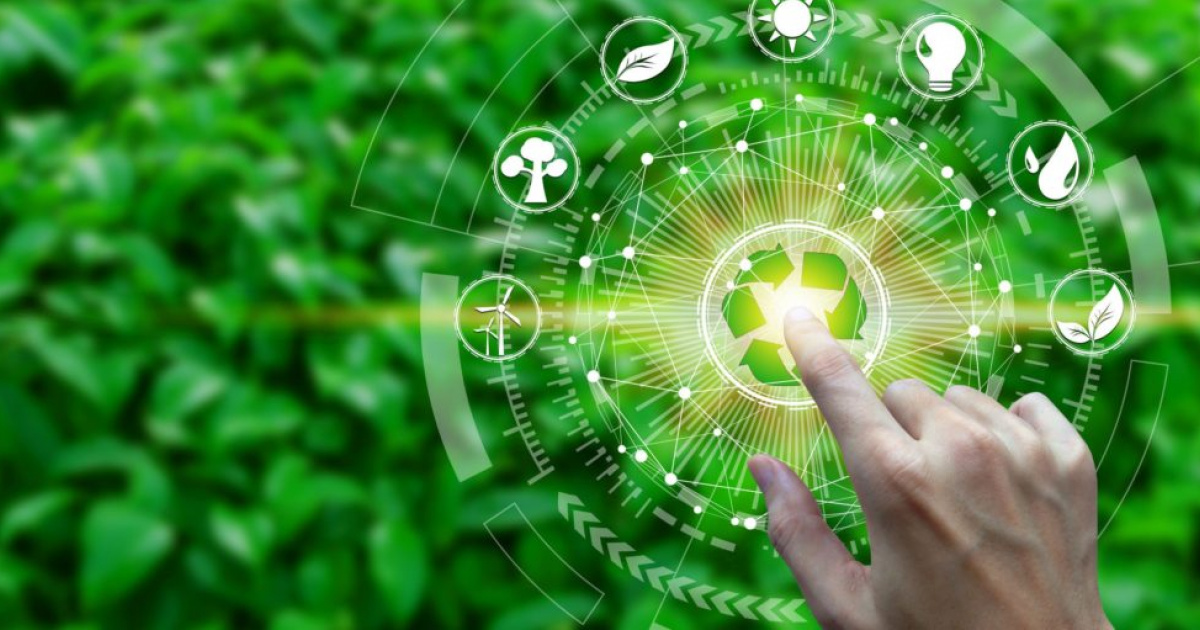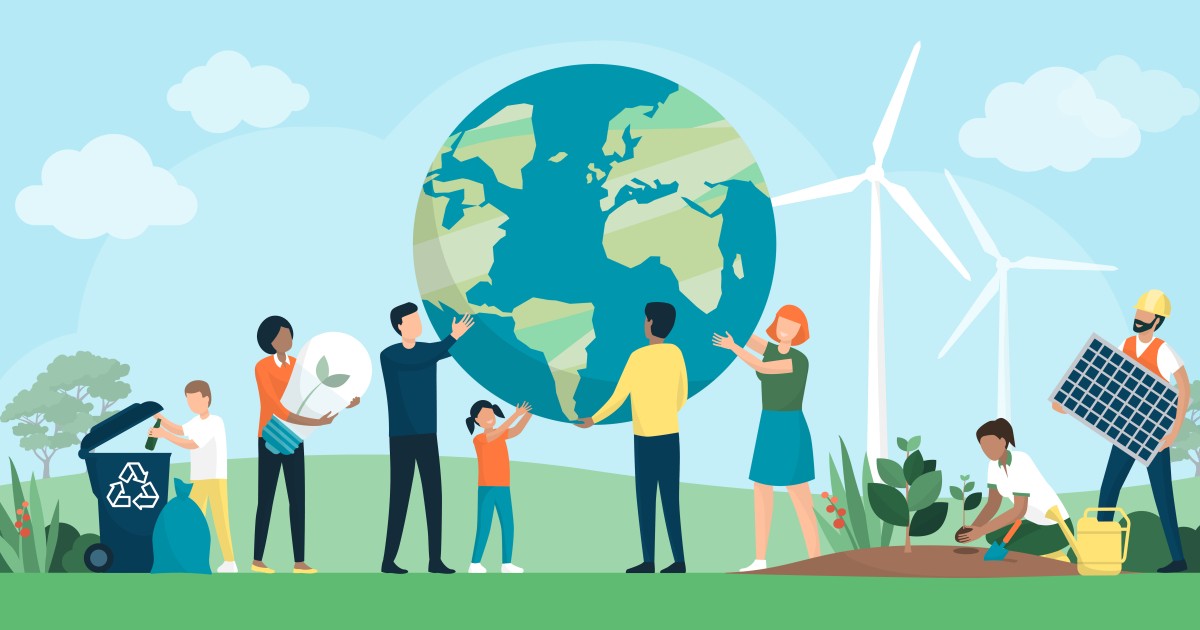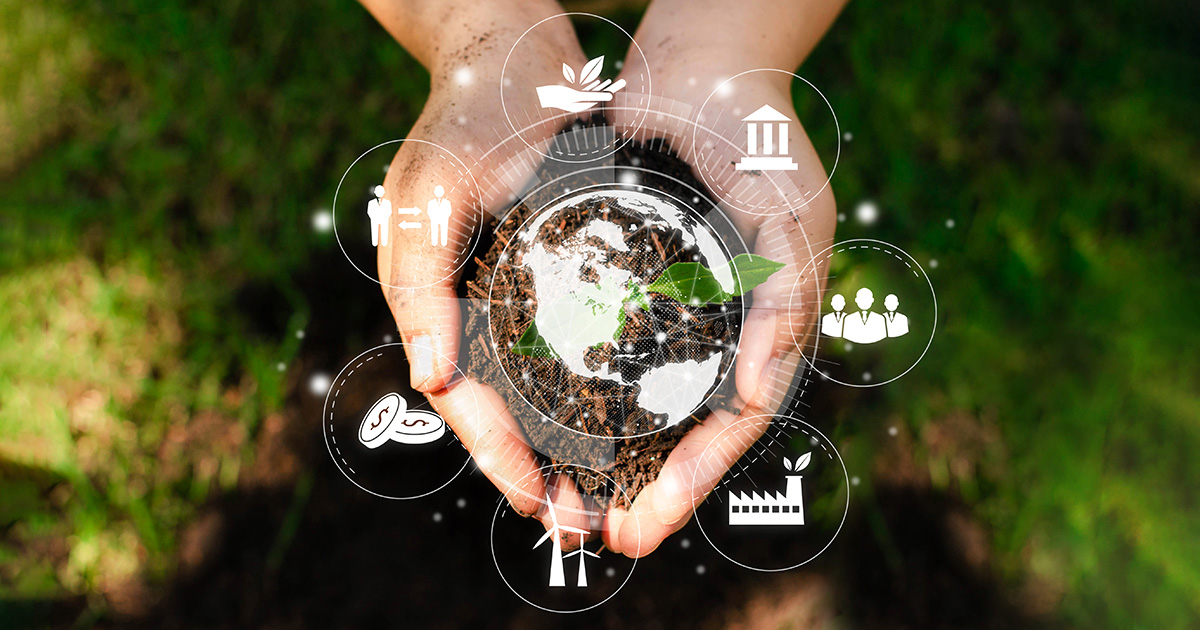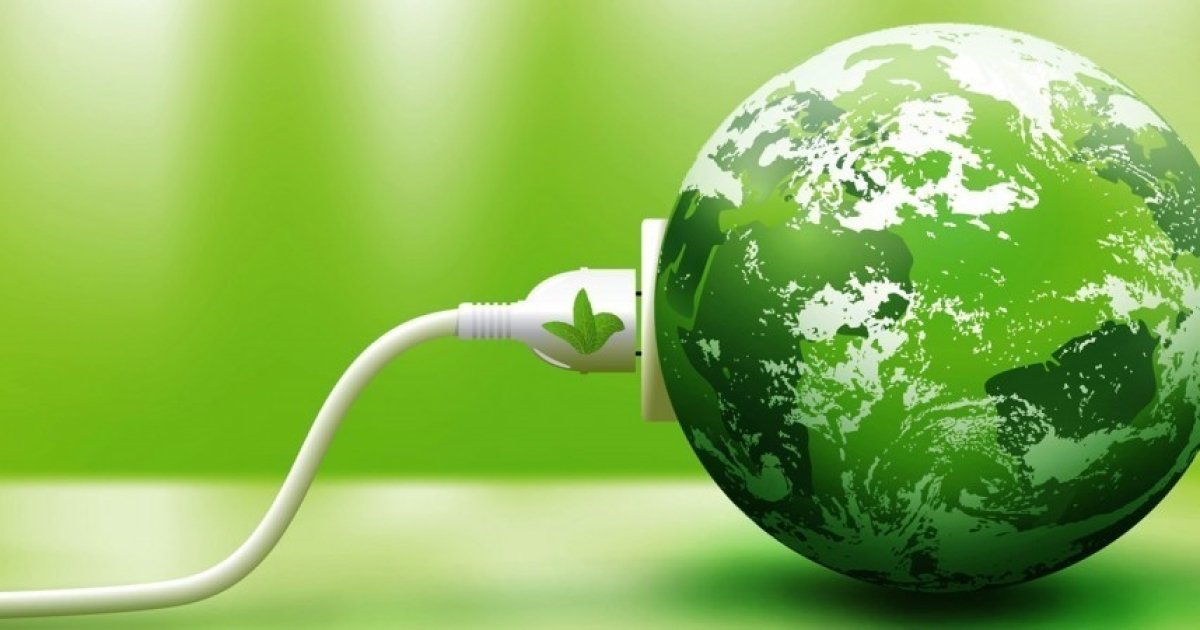Latest Trends in Environmental Conservation: The Impact of Technology
In a world teetering on the precipice of environmental conservation challenges, technology emerges as the beacon of hope for conservation efforts. It’s not merely a tool but a transformational force redefining how we safeguard our planet. As we delve into the latest trends, we unveil a thrilling journey that showcases how technology is revolutionizing conservation and why its role is indispensable.

Smart Sensors and IoT
Harnessing Data for Conservation Efforts
At the heart of the tech-driven conservation revolution lies our ability to harness a deluge of data. Smart sensors and the Internet of Things (IoT) have emerged as the unsung heroes, quietly collecting real-time data on a plethora of environmental variables – from temperature and humidity to pollution levels and the subtle nuances of wildlife activity. These sensors knit together a comprehensive tapestry of knowledge that empowers us with a profound understanding of our natural world.
Real-time Monitoring of Ecosystems
In this era of instantaneous information, IoT devices provide a real-time window into the dynamic landscapes of our planet. They are our eyes and ears, tirelessly monitoring ecosystems with unparalleled precision, whether it’s the bustling underwater realms or the hidden treetops. With these devices, change is no longer a silent assailant; it’s a notification that triggers action.
Case Study: IoT in Wildlife Tracking
Consider the remarkable case of IoT technology in tracking endangered species. These devices have unlocked a new era in understanding animal behavior. By tracking the movements of animals in their natural habitats, gathering data, and even predicting their next steps, IoT has elevated our comprehension of animal migration patterns, offering invaluable insights into the design of more effective conservation strategies.
Artificial Intelligence and Machine Learning

Leveraging AI for Data Analysis
The treasure trove of data collected in conservation endeavors could easily drown us, were it not for the wizardry of artificial intelligence (AI) and machine learning. These digital sentinels sift through vast datasets, detecting subtle patterns, and helping us identify trends and threats with unprecedented accuracy.
Predictive Modeling for Climate Change
AI models have become the vanguard of predictive climate change analysis. By amalgamating historical data, current conditions, and the complexities of a changing world, these models forecast climate trends, offering a glimpse into the future. This invaluable foresight empowers us with insights essential for mitigation and adaptation in a rapidly changing world.
AI-powered Species Identification
Species identification has undergone a revolution, thanks to AI-powered tools. These tools, armed with photos and sound recordings, perform species identification with remarkable efficiency. The result? Quicker and more precise species monitoring – an indispensable weapon in our arsenal to preserve biodiversity.
Drones and Aerial Surveillance
A Bird’s-Eye View of Conservation
Drones have quite literally elevated conservation to new heights, offering a unique perspective that transcends boundaries. These unmanned aerial vehicles grant us the privilege of assessing landscapes from a vantage point that was previously a mere daydream.
Monitoring Deforestation and Illegal Activities
Drones have proven indispensable in monitoring deforestation and illegal activities such as poaching and illegal logging. Their aerial view acts as an efficient watchtower, enabling rapid response to protect delicate ecosystems.
Precision Airdrops for Afforestation
But drones are not only guardians; they’re also sowers of hope. They engage in precision airdrops, distributing seeds and supplies for afforestation efforts. This precision ensures the best chance of successful forest restoration, one seed at a time.
Blockchain for Transparent Transactions
Safeguarding Conservation Funding
Transparency is the cornerstone of effective conservation funding. Blockchain technology emerges as the guardian of transparency, offering an immutable ledger for tracking contributions. Donors can now follow the journey of their contributions, from their digital wallets to the frontlines of conservation.
Tracking Sustainable Practices
In the pursuit of sustainability, blockchain’s potential extends beyond funding. It becomes a watchful guardian, monitoring and verifying sustainable practices. For industries with a significant environmental footprint, such as logging and fishing, blockchain is a sentinel of accountability.
Preserving Biodiversity through Secure Transactions
Beyond dollars and cents, blockchain steps in as the guardian of biodiversity. By tracking the trade of wildlife and plant products, it acts as a sentinel against illegal trafficking, an unsung hero in preserving the rich tapestry of life on Earth.
Big Data and Conservation
Unlocking Insights from Vast Data Sets
In the annals of modern conservation, big data emerges as the bedrock on which our efforts are founded. With its immense volume, we can delve deep into the intricate tapestry of ecosystems, deciphering patterns in weather, and unraveling the impact of human activity on the environment.
Conservation Planning and Management
Big data does more than illuminate the complexity of nature; it guides our steps in conservation. We make informed decisions on where to focus our efforts, allocate resources judiciously, and measure the effectiveness of conservation initiatives. It’s a compass guiding our journey to protect the planet.
Big Data in Ocean Conservation
Nowhere is the power of big data more evident than in ocean conservation. With the world’s oceans under a multi-pronged assault, data-driven strategies are essential to safeguard marine ecosystems. The insights garnered from the deep blue are invaluable as we strive to protect our aquatic realms.
Augmented Reality in Environmental Education

Immersive Learning Experiences
Augmented reality (AR) represents a quantum leap in environmental education. It immerses students in interactive learning experiences, creating virtual ecosystems where they can witness the dance of life, explore habitats, and delve into conservation concepts in a way that textbooks and documentaries never could.
Virtual Field Trips and Nature Exploration
AR whisks students on virtual field trips, offering a cost-effective, eco-friendly alternative to in-person excursions. It opens doors to diverse environments, even those on the brink of climate-induced changes, right from the confines of the classroom.
Interactive Conservation Awareness
By overlaying information and experiences onto the real world, AR makes conservation awareness engaging. It’s not just about learning; it’s about taking action. AR encourages individuals to be protagonists in the story of conservation, making daily choices that echo in the world’s ecosystems.
Green Tech: Solar and Wind Solutions
Sustainable Energy for Conservation
Green technology, including solar and wind solutions, bestows sustainable energy sources upon conservation efforts. It powers remote monitoring stations, research facilities, and more, minimizing our environmental footprint.
Off-Grid Technology in Remote Areas
In the far reaches of the world, where conventional energy sources are but a dream, green tech provides off-grid solutions. These remote areas can now partake in vital research and conservation without harming their pristine surroundings.
Solar-Powered Environmental Monitoring Stations
Solar power is particularly revolutionary for environmental monitoring stations. It ensures a continuous stream of data, allowing us to witness the heartbeat of ecosystems without leaving a carbon footprint.
3D Printing for Habitat Restoration
Creating Artificial Coral Reefs
3D printing technology is sculpting artificial coral reefs, breathing life into barren underwater landscapes. These structures not only offer new habitats for marine life but also serve as beacons of hope for ecosystems battered by climate change.
Customized Habitats for Endangered Species
Innovative conservationists are wielding 3D printing to craft tailored habitats for endangered species. These microenvironments provide endangered species with a fighting chance in an ever-changing world, ensuring their continued existence.
Innovative Solutions for Reforestation
3D printing also sparks innovation in reforestation. From seed-filled pods to biodegradable support structures for saplings, 3D printing carves a path toward a greener future.
Remote Sensing and Satellite Technology
Global Environmental Monitoring
Satellites armed with remote sensing capabilities offer a panoramic view of environmental changes on a global scale. They peer into the depths of forests, monitor shifting climate patterns, and cast their watchful gaze upon the Earth’s health from the limitless expanse of space.
Detecting Climate Change Impacts
Remote sensing plays a pivotal role in detecting the impacts of climate change. It unveils the retreat of glaciers, the rise of sea levels, and the subtle transformations of ecosystems. This information forms the foundation of climate policy and adaptation strategies.
Tracking Illegal Fishing with Satellites
Satellite technology extends its reach to the seas, where it’s instrumental in tracking illegal fishing activities. These vigilant eyes in the sky can pinpoint vessels engaged in poaching and overfishing, safeguarding our oceans.
Bioinformatics and Genetic Conservation
DNA Sequencing for Endangered Species
Bioinformatics tools have ushered in a new era of conservation for endangered species. DNA sequencing is the key, unraveling the genetic diversity that forms the bedrock of conservation breeding and preservation efforts.
Genetic Diversity Preservation
Safeguarding the genetic diversity of species is paramount for their long-term survival. Bioinformatics helps in this quest, preserving genetic variation and making populations more resilient to environmental changes.
Genomic Tools for Conservation
Genomic tools reveal the genetic health of populations, offering the wisdom needed to make sound decisions about the conservation of species, especially those teetering on the brink of extinction.
Mobile Apps for Citizen Engagement

Citizen Science in the Digital Age
Mobile apps transform ordinary individuals into citizen scientists. They empower people to contribute to data collection, share observations, and actively participate in conservation projects. It’s science for all.
Crowdsourced Environmental Data
Environmental data, a currency of the conservation world, flows through these mobile apps. The collaboration between professionals and enthusiasts breathes life into conservation efforts, painting a more vivid picture of our planet’s health.
Eco-Friendly Lifestyle Apps
Beyond data collection, mobile apps encourage individuals to lead eco-friendly lives. From sustainable shopping guides to carbon footprint calculators, these apps inspire environmentally conscious choices, one download at a time.
Green Infrastructure and Smart Cities

Sustainable Urban Planning
Green infrastructure is the architect of sustainable urban planning. It reshapes cityscapes with green roofs, permeable pavements, and urban parks that dance with life. They cleanse the air, quell the heat islands, and welcome biodiversity into concrete jungles.
Eco-Friendly Building Technologies
In the heart of smart cities, eco-friendly building technologies redefine the skyline. These structures embody energy-efficient designs, harness renewable energy sources, and incorporate sustainable materials, turning every brick into a testament to environmental responsibility.
Urban Biodiversity Initiatives
Smart cities see the beauty in coexistence, creating green spaces and wildlife corridors that extend an olive branch to nature. Within these metropolitan landscapes, urban biodiversity initiatives ensure that humans and wildlife walk hand in paw.
Ocean Cleanup Technologies
Tackling the Plastic Pollution Crisis
As the oceans choke on plastic, innovative technologies rise to the occasion. From passive drifters to active cleanup systems, these technologies are on the frontlines of the battle against plastic waste in the seas.
Innovative Ocean Cleaning Solutions
Ocean cleanup technologies employ diverse strategies. Some deploy ocean booms that gather plastic debris like silent sentinels, while others are vessels that skim the surface, and some are underwater drones that dive deep to cleanse the depths of pollution. Each strategy is a lighthouse of hope for our marine ecosystems.
Protecting Marine Ecosystems
Ultimately, these technologies stand as the guardians of marine ecosystems. They strive to reduce the harm caused by plastic pollution on marine life and habitats, ensuring that our oceans thrive once more.
Smart Agriculture and Precision Farming

Sustainable Farming Practices
Smart agriculture and precision farming usher in sustainable practices. They minimize the environmental footprint of agriculture by optimizing irrigation, reducing chemical use, and managing land efficiently. It’s farming that feeds the world while nourishing the planet.
IoT in Crop Monitoring
Internet of Things (IoT) devices are the attentive shepherds of crop monitoring. Sensors in fields gather data on soil moisture, temperature, and crop health, empowering farmers with knowledge to make informed decisions and reap abundant harvests.
Reducing Agricultural Environmental Footprint
These technologies champion a shift towards reducing the environmental footprint of agriculture. They marry food production with environmental responsibility, ensuring a harmonious coexistence between human sustenance and Earth’s health.
Tech-Driven Conservation Success Stories
Case Study: How Technology Saved a Species
The annals of tech-driven conservation are punctuated with heartwarming stories of how technology came to the rescue. From the renaissance of the California condor to the triumphant return of the black-footed ferret, these stories reveal the power of innovation in conservation, rekindling hope when the odds seemed stacked against us.
Notable Conservation Projects
Tech-driven conservation has spawned an array of notable projects. Rewilding initiatives, habitat restoration, anti-poaching efforts – each serves as a thread in the rich tapestry of conservation, weaving together the preservation of endangered species and ecosystems.
Lessons from Tech-Enabled Success
These successes write the manual for effective technology-driven conservation. They underscore the importance of adaptability, the beauty of collaboration, and the fact that, with innovation as our ally, there are no insurmountable challenges.
Ethical Considerations in Tech Conservation
Balancing Progress and Conservation
Amid the euphoria of technological progress, it’s crucial to maintain equilibrium between innovation and conservation. Ethical considerations stand as the sentinel at this crossroads, ensuring that our advancements do not inadvertently imperil the environment.
Data Privacy and Environmental Monitoring
The wealth of environmental data collected raises a pertinent question of data privacy. Striking the right balance between open access and security is a tightrope walk that we must navigate in tech conservation.
The Role of Regulations and Ethics
Effective regulations and ethical guidelines serve as the compass that guides our use of technology in conservation. They ensure that innovation becomes a force for good, not just today but for generations to come.
Future Trends and Emerging Technologies

Quantum Computing for Conservation
In the ever-evolving landscape of technology, quantum computing emerges as a phoenix. With its unparalleled processing capabilities, it promises to unlock new avenues for modeling ecological systems, optimizing resource management, and tackling environmental challenges in ways that were once only dreams.
Biotechnology Breakthroughs
Biotechnology opens doors to the resurrection of extinct species and the enhancement of genetic resilience in endangered ones. The possibilities it unveils are both a subject of debate and a wellspring of potential solutions for conservation.
The Growing Role of Space Tech
The integration of space technology in conservation is on the rise. Earth-observing satellites, advanced telescopes, and space-based sensors provide vital data for environmental monitoring, extending our vision to the farthest reaches of the planet.
Funding and Investment in Tech Conservation
Philanthropy in Environmental Tech
The chorus of philanthropic organizations and individuals is growing louder in support of environmental technology. They recognize that their contributions can fuel meaningful change in conservation efforts, transforming the landscape of environmental philanthropy.
Corporate Initiatives in Conservation
Leading corporations are not content with passive spectators. They’re stepping up, weaving environmental initiatives into their business strategies, funding cutting-edge research, and implementing sustainable practices within their operations. They are the embodiment of corporate responsibility, acknowledging that success should be synonymous with environmental stewardship.
Navigating Funding Challenges
However, amidst the symphony of support, funding challenges continue to play a dissonant note. The quest for a steady stream of resources for tech conservation is an ongoing challenge, demanding creative solutions and unwavering commitment.
Challenges and Limitations
Tech’s Role in Conservation vs. Traditional Methods
While technology unfurls its impressive capabilities, it’s imperative to recognize its limitations. It should be seen as a complement, not a replacement for traditional conservation methods that have stood the test of time. There’s no substitute for the boots on the ground, the hands in the soil, and the eyes trained on nature’s rhythms.
Cybersecurity Risks in Environmental Tech
The digital transformation of conservation efforts brings with it the specter of cybersecurity risks. Data breaches and hacking attempts threaten the sanctity of sensitive environmental data. The guardians of tech conservation must remain vigilant, protecting the digital heartbeats of our planet.
Technological Gaps in Global Conservation
Even as technology races forward, global conservation faces inequalities in access to these innovations. Bridging these gaps is an essential task, ensuring that every corner of the world benefits from the latest advancements in tech-driven conservation.
Conclusion
The journey of technology in environmental conservation is exhilarating, offering us new tools, strategies, and boundless hope for the future. As we navigate these trends, we must embrace the digital age of conservation, for it’s not a choice but an imperative to protect our planet.
Embracing the Digital Age of Conservation
The call to action resounds in every corner of the globe. Whether you’re a scientist, an investor, an environmentalist, or simply someone who cares deeply about the future of our planet, your role in this digital age of conservation is pivotal. Together, we can pave the way for a sustainable and thriving world, where technology and nature coexist in harmony, where innovation safeguards the environment, and where conservation is a collective responsibility.
Frequently Asked Questions (FAQ) – Technology in Environmental Conservation
What is the role of technology in environmental conservation?
Technology plays a crucial role in environmental conservation by providing tools and solutions that enhance our ability to monitor, protect, and preserve the environment. It enables data collection, analysis, and the development of innovative strategies for safeguarding our planet.
How does smart sensor technology contribute to environmental conservation?
Smart sensors, part of the Internet of Things (IoT), gather real-time data on environmental conditions such as temperature, humidity, pollution levels, and wildlife activities. This data offers valuable insights for conservationists, aiding in informed decision-making.
What is the significance of AI and machine learning in conservation efforts?
Artificial intelligence (AI) and machine learning are used to analyze large datasets, identify patterns, and predict environmental changes. They assist in everything from climate change modeling to species identification, improving the effectiveness of conservation initiatives.
How are drones used in environmental conservation?
Drones provide aerial surveillance, helping conservationists monitor ecosystems, detect deforestation, combat illegal activities like poaching, and even facilitate precision airdrops for afforestation efforts.
What is the role of blockchain technology in environmental conservation?
Blockchain technology ensures transparent and secure transactions, making it invaluable for tracking conservation funding, verifying sustainable practices, and combating illegal wildlife trafficking.
How does big data benefit conservation efforts?
A6: Big data helps conservationists gain a deeper understanding of ecosystems, assess the impact of human activity on the environment, and plan and manage conservation strategies more effectively.
What are the educational applications of augmented reality in environmental conservation?
Augmented reality enhances environmental education by offering immersive learning experiences, virtual field trips, and interactive conservation awareness. It engages students and encourages them to make sustainable choices.
How do solar and wind solutions contribute to green technology in conservation?
Solar and wind solutions provide sustainable energy for conservation efforts, powering remote monitoring stations and reducing the environmental impact of environmental research and monitoring.
How is 3D printing used for habitat restoration in conservation?
3D printing technology is used to create artificial coral reefs, customized habitats for endangered species, and innovative solutions for reforestation, offering new tools for ecosystem restoration.
What role does satellite technology play in global environmental monitoring?
Satellites equipped with remote sensing technology provide a global perspective on environmental changes, detecting climate change impacts, monitoring deforestation, and tracking illegal fishing activities.
How does bioinformatics aid genetic conservation efforts?
Bioinformatics tools, including DNA sequencing, help conservationists understand genetic diversity, preserve genetic variation, and make informed decisions regarding the conservation of endangered species.
How can mobile apps engage citizens in conservation efforts?
Mobile apps empower citizens to contribute to conservation through citizen science, crowdsource environmental data, and adopt eco-friendly lifestyles by providing valuable tools and information.
What is green infrastructure, and how does it benefit smart cities?
Green infrastructure includes eco-friendly building technologies, sustainable urban planning, and urban biodiversity initiatives. It contributes to cleaner air, reduced heat islands, and enhanced biodiversity within smart cities.
How are ocean cleanup technologies addressing the plastic pollution crisis?
Ocean cleanup technologies utilize various strategies, from passive drifters to active cleanup systems, to target and remove plastic waste from the world’s oceans, ultimately protecting marine ecosystems.
What are some examples of tech-driven conservation success stories?
Tech-driven conservation has saved species from the brink of extinction, such as the California condor and the black-footed ferret. Notable projects include rewilding initiatives and habitat restoration.
What ethical considerations are involved in technology-driven conservation?
Ethical considerations in tech conservation involve striking a balance between progress and conservation, addressing data privacy and cybersecurity concerns, and establishing regulations and ethical guidelines for responsible use of technology.
What emerging technologies are shaping the future of environmental conservation?
Emerging technologies include quantum computing for conservation modeling, biotechnology breakthroughs for species preservation, and the growing role of space tech, which provides critical data for environmental monitoring.
How can individuals contribute to tech conservation efforts?
Individuals can support tech conservation as scientists, investors, environmentalists, or concerned citizens. Their active involvement and advocacy are pivotal in embracing the digital age of conservation.
What are the main challenges and limitations of technology in conservation?
Challenges include the need to balance technology with traditional methods, address cybersecurity risks, and bridge technological gaps in global conservation efforts. Technology should enhance, not replace, established conservation practices.
What is the call to action for embracing the digital age of conservation?
The call to action is to support and promote the integration of technology in conservation. Whether you’re a scientist, investor, environmentalist, or simply someone who cares about the environment, your role is crucial in shaping a sustainable and thriving world.
Explore our content for more insights





